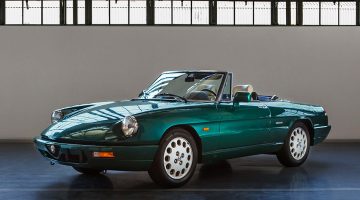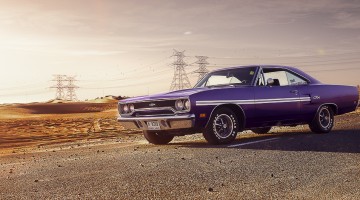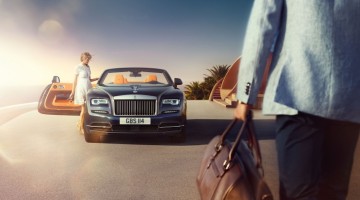crankandpiston takes a closer look at one of the original muscle cars, the Plymouth Road Runner, at Dubai’s Al Aweer used car market.
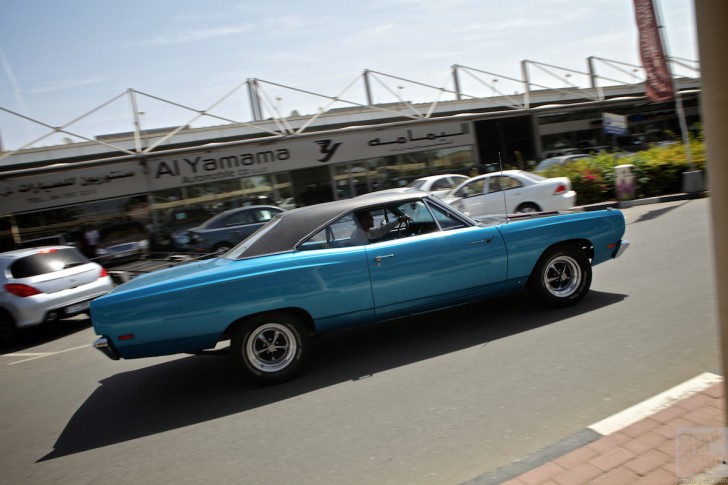
With each new car launch, or so it seems, comes the same phrase attached to the PR bilge: ‘youth appeal’. More and more, manufacturers are keen to market their latest product towards a younger audience, and in doing so hopefully raise their profiles. In the late 1960s, Chrysler had similar ideas.

At the time, the American giant’s long-standing Belvedere, a full-size luxurious saloon (in its heyday at least), was considered ‘darling’ to some and a bit too beige sandals for others. The Belvedere GTX meanwhile – a ‘gentleman’s muscle car’ and which would soon be repackaged as the Plymouth GTX – was capable of pulling the tarmac from its moorings courtesy of a base level 7.0-litre V8, but was just a little on the pricey side for Chrysler’s younger aspiring buyers. As was the GTO, Pontiac’s bruiser that proved a game changer with its big block performance in 1964.
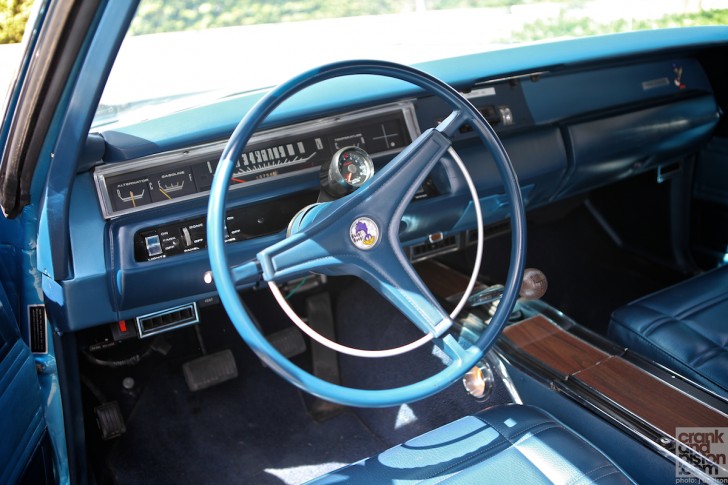
Certainly Chrysler was raking in the dosh, but concerns in the motoring community that muscle cars had evolved from their baser beginnings by getting bigger, better equipped and ‘more sophisticated’ (as well as an untapped market of younger buyers) meant the design gurus were soon back at the drawing board.
The brief was simple: Chrysler wanted a relatively cheap, moderately sized saloon that could still curl the eyelashes of its occupants if the loud pedal was stepped on hard enough. The answer to this predicament came in 1968 and is epitomized with just two words: ‘beep beep’.

Fast forward some 45 years and you find crankandpiston in the Al Aweer used car market in Dubai, UAE, watching and grinning like idiots as a 1969 first gen Road Runner lights up the rears, squirrels under heavy acceleration and roars its 6.3-litre V8 down the strip in front of us, chorusing the drive with a blast of its specially engineered horn: ‘beep beep’.
This is certainly no Belvedere. Underneath the GTX-esque physique is little in the way of comfort and luxury, leather seats and a push-button radio aside. With the aim of maximising performance, all extraneous fittings were left on the designer’s workbench (and that even includes the car mats) to maximise speed and gut-wrenching performance. The 383cu big block under the bonnet for example runs close to 368hp (following some work), and a light(er)weight bodyshell meant acceleration would prove pretty ferocious.
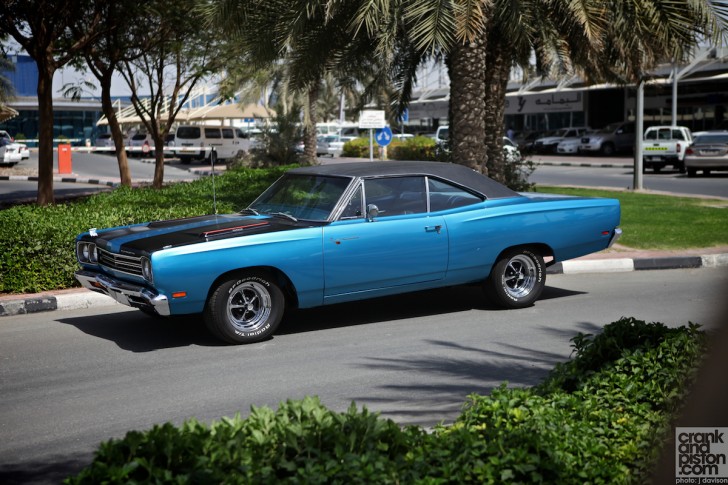
The new Road Runner, after all, did have mandates to meet: not only did the brute have to hit 100mph (160kph) across the quarter mile in less than 15 seconds, it also had to cost less than $3000. With a muscle car market already buzzing with the Chevy Chevelle SS, Dodge Charger, Ford Torino GT and – of course – the Pontiac GTO, making waves was always going to be tricky.
Heritage and desirability (plus the occasional bout of inflation) mean the model in front of us costs a little more than $3000, especially since most of the features and fittings are original. Give or take a spark plug or two down the years, the 383cu V8 is the same block that rolled off the conveyor belt in 1969, though has still covered only 400,000km, as has the four-speed manual gearbox.
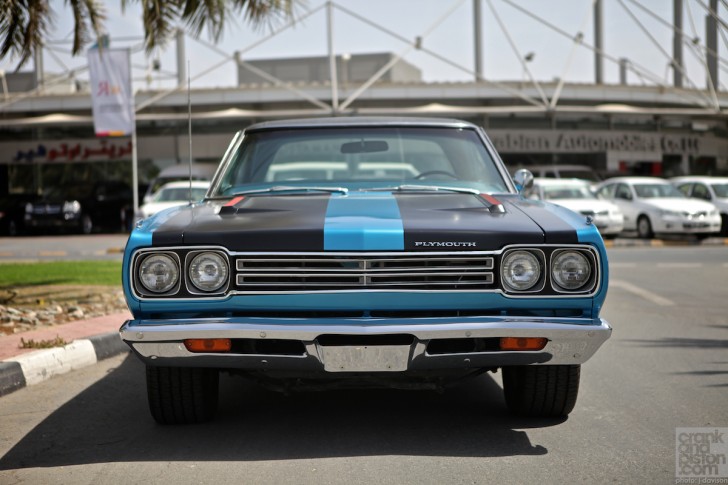
The bonnet meanwhile, though still an original component, is actually from another period Road Runner. The BF Goodrich Radials are also a relatively new add-on, as is the air conditioning unit: the Road Runner’s natural element may be the desert amidst the coyotes but even it can’t stand more than 5/6 minutes in 50+ degrees without back-up.
Minor quibbles though: what we have in front of us is the real McCoy. A product that Chrysler, quite incredibly, approached Warner Brothers about in 1968. The Road Runner, a Saturday morning cartoon favourite, embodied all that Chrysler saw in its new muscle car: character; agility; pluck; an uncanny ability to stay one step ahead of its tenacious adversary Wile E. Coyote (read Ford and Dodge there). It was perfect, and a symbol that the company’s younger audience could easily relate to.
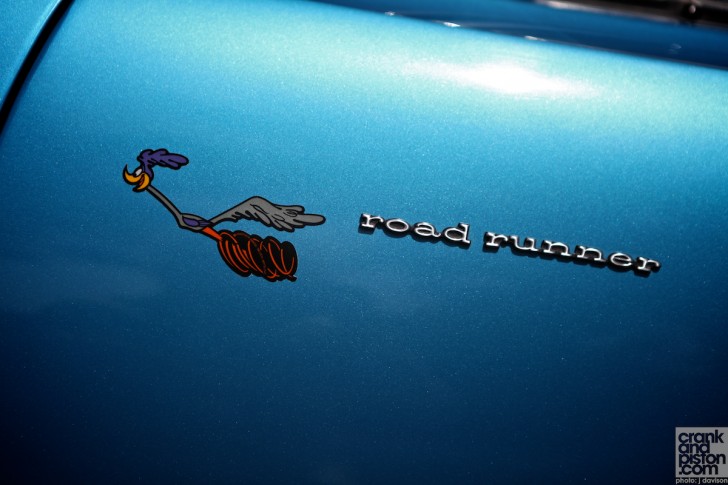
Several impassioned phone calls to Warner Brothers, unending reams of paperwork, a heart with a devil’s tail as a motif and a marketing campaign that basically wrote itself, and the Plymouth Road Runner hit the scene. How different the resultant muscle car legacy might have been had Chrysler opted for its second choice of name: LaMancha, inspired by the musical of almost the same name.

Our shoot is done, and while Christopher Baer – our man-in-the-know for today, and senior sales advisor at Centurion Cars where the Plymouth is now for sale –slides back behind the wheel to pull the brute back onto the showroom forecourt, he mentions that the Road Runner has received a lot of interest from potential buyers. Hardly surprising. In each petrolhead lies the heart of an eight-year-old, and what better way to snag attention than with a cartoon bird forever getting the better of ACME?
‘Beep beep’

